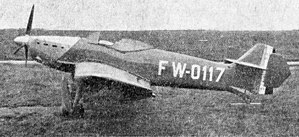
The Dewoitine D.500 was an all-metal, open-cockpit, fixed-undercarriage monoplane fighter aircraft designed and produced by French aircraft manufacturer Dewoitine.

The Amiot 143 was a late 1930s French 5-seat Multiplace de Combat (M.5) designed to meet 1928 specifications for a monoplane capable of day and night bombing, long-range reconnaissance and bomber escort.

The Hispano-Suiza 12Y was an aircraft engine produced by Hispano-Suiza for the French Air Force before the Second World War. The 12Y became the primary French 1,000 hp (750 kW) class engine and was used in a number of famous aircraft, including the Morane-Saulnier M.S.406 and Dewoitine D.520.

The Arsenal VG-33 was one of a series of fast French light fighter aircraft under development at the start of World War II, but which matured too late to see extensive service in the French Air Force during the Battle of France.
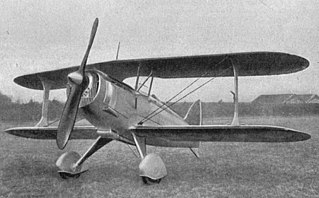
The Blériot SPAD S.510 was a French single-seat, single-engined biplane fighter aircraft. First flying in 1933, 60 were built for the Armée de l'Air, entering service in 1936. The type remained in service as a fighter-trainer at the start of the Second World War. It was the last French biplane fighter to enter production.

The Potez 630 and its derivatives were a family of twin-engined, multirole aircraft developed for the French Air Force in the late 1930s. The design was a contemporary of the British Bristol Blenheim and the German Messerschmitt Bf 110.

The Farman F.220 and its derivatives were thick-sectioned, high-winged, four engined monoplanes from Farman Aviation Works. Based on the push-pull configuration proven by the F.211, design started in August 1925 and the first flight of the prototype was on 26 May 1932. The definitive F.222 variant was the biggest bomber to serve in France between the world wars. One variant was designed as an airliner.

The Nieuport-Delage NiD 52 was a French fighter aircraft of the 1920s. A single-engined sesquiplane, it served with the Spanish Air Force, being operated by both sides of the Spanish Civil War.
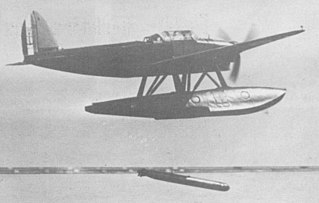
The Latécoère 298 was a French seaplane that served during World War II. It was designed primarily as a torpedo bomber, but served also as a dive bomber against land and naval targets, and as a maritime reconnaissance aircraft. Of a sturdy and reliable construction and possessing good manoeuvrability, it was France's most successful military seaplane, and served throughout the war in various guises.

Potez 25 was a French twin-seat, single-engine biplane designed during the 1920s. A multi-purpose fighter-bomber, it was designed as a line aircraft and used in a variety of roles, including fighter and escort missions, tactical bombing and reconnaissance missions. In the late 1920s and early 1930s, Potez 25 was the standard multi-purpose aircraft of over 20 air forces, including French and Polish. It was also popular among private operators, notably mail transport companies.

The ANF Les Mureaux 110 and its derivatives were a family of French reconnaissance aircraft developed in the 1930s. They were all-metal, parasol-wing monoplanes that seated the pilot and observer in tandem open cockpits. The aircraft were widely used in the Battle of France, but were all scrapped soon thereafter.

The Potez 540 was a French multi-role aircraft of the 1930s. Designed and built by Potez, it served with the French Air Force as a reconnaissance bomber, also serving with the Spanish Republican Air Force during the Spanish Civil War. Although obsolete as a bomber, it remained in service in support roles and in France's overseas colonies at the start of World War II.

The Nieuport-Delage NiD.62 was a French sesquiplane fighter from the early 1930s. This machine was a descendant of a long line of Nieuport-Delage fighters that were designed and built during the years immediately after World War I. The NiD.62 was built in 1931 as a fighter for the Armée de l'Air. It served until the late 1930s, when it was replaced by more modern monoplane fighters. By the time of the outbreak of World War II in September 1939, all of the NiD.62s had been withdrawn from front-line fighter escadrilles but were used as trainers in French flight schools. A few aircraft were employed as target tugs. After the French German Armistice and German occupation of North and West part of France in June 1940, the German Luftwaffe had no interest in the NiD.62s and they were scrapped. None survived the war.
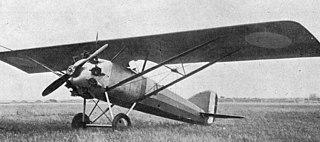
The Gourdou-Leseurre GL.30 was a racing aircraft built in France in 1920 which formed the basis for a highly successful family of fighter aircraft based on the same design.
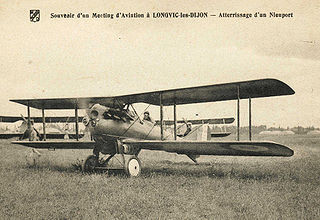
The Nieuport-Delage NiD.29 was a French single-seat biplane fighter designed and built by Nieuport-Delage for the French Air Force.

The Nieuport-Delage NiD 42 was a fighter aircraft built in France in the early 1920s, the first in a family of designs that would form the backbone of the French fighter force over the next decade.
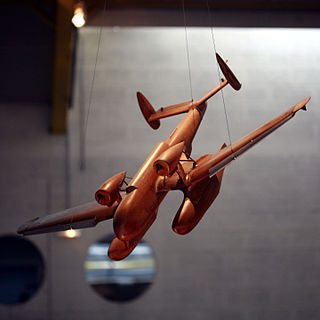
The Loire-Nieuport 10 was a 1930s French prototype long-range maritime reconnaissance and combat floatplane produced by Loire-Nieuport, a joint venture between Loire Aviation and Nieuport-Delage. It was an attempt to answer the requirements for the Navy's programme Hydravion éclaireur de combat for a large floatplane capable of acting as a torpedo bomber or reconnaissance aircraft.

The SNCAO 200, sometimes written CAO.200, was a prototype French single seat fighter aircraft of the 1930s. It was a single engined monoplane intended to compete with the Dewoitine D.520, but was unsuccessful, only a single example being built.

The Bréguet 410 was a French bomber of the early 1930s. Not many of these twin-engined sesquiwing biplanes were built. At least one Breguet 413, one of its variants, was sold to the Spanish Republican Air Force during the Spanish Civil War.

The Loire-Nieuport 161 was a single-seat, single-engine, all-metal, low-wing monoplane fighter designed and built in France in 1935 to compete for a government contract. Accidents delayed its development and only three prototypes were completed.
